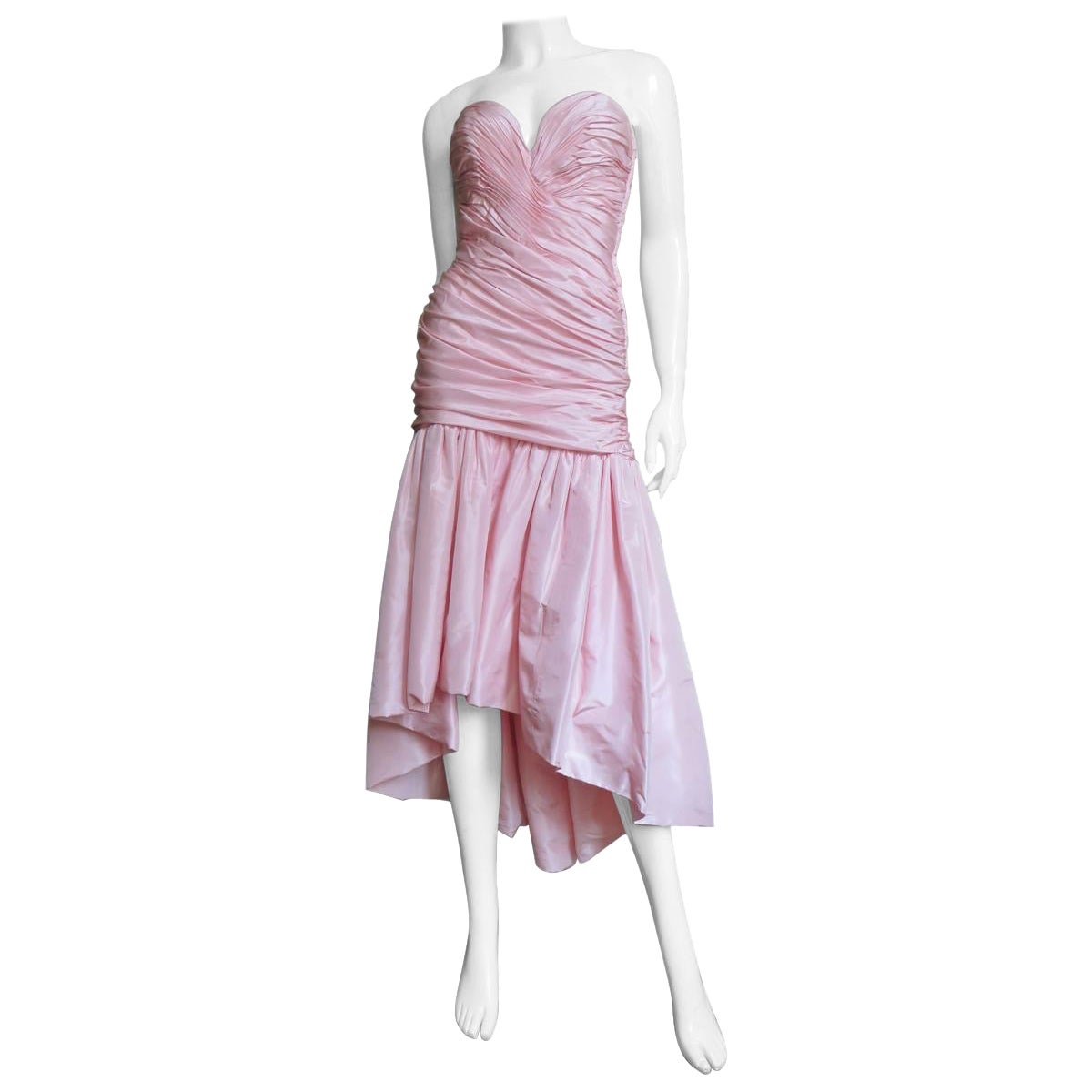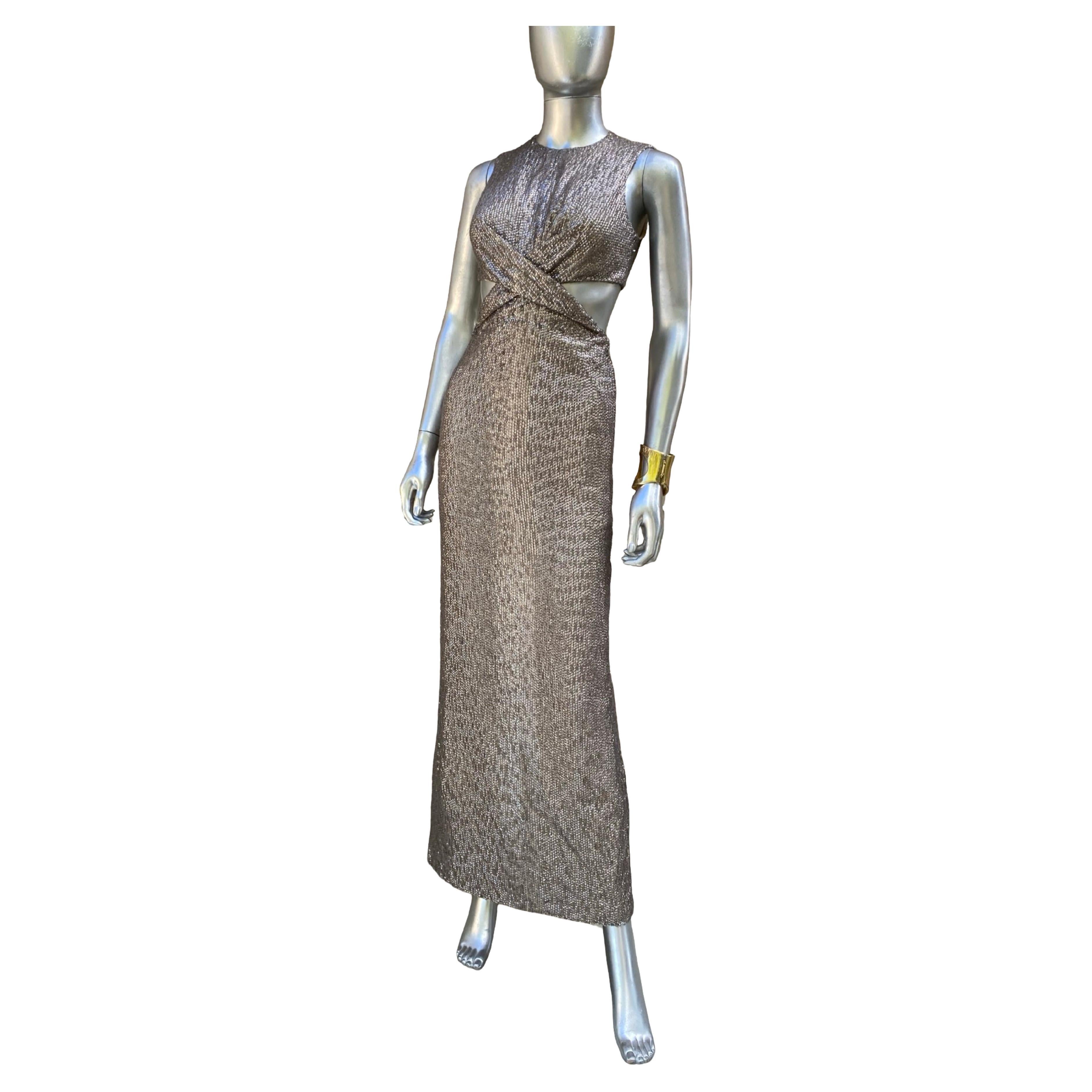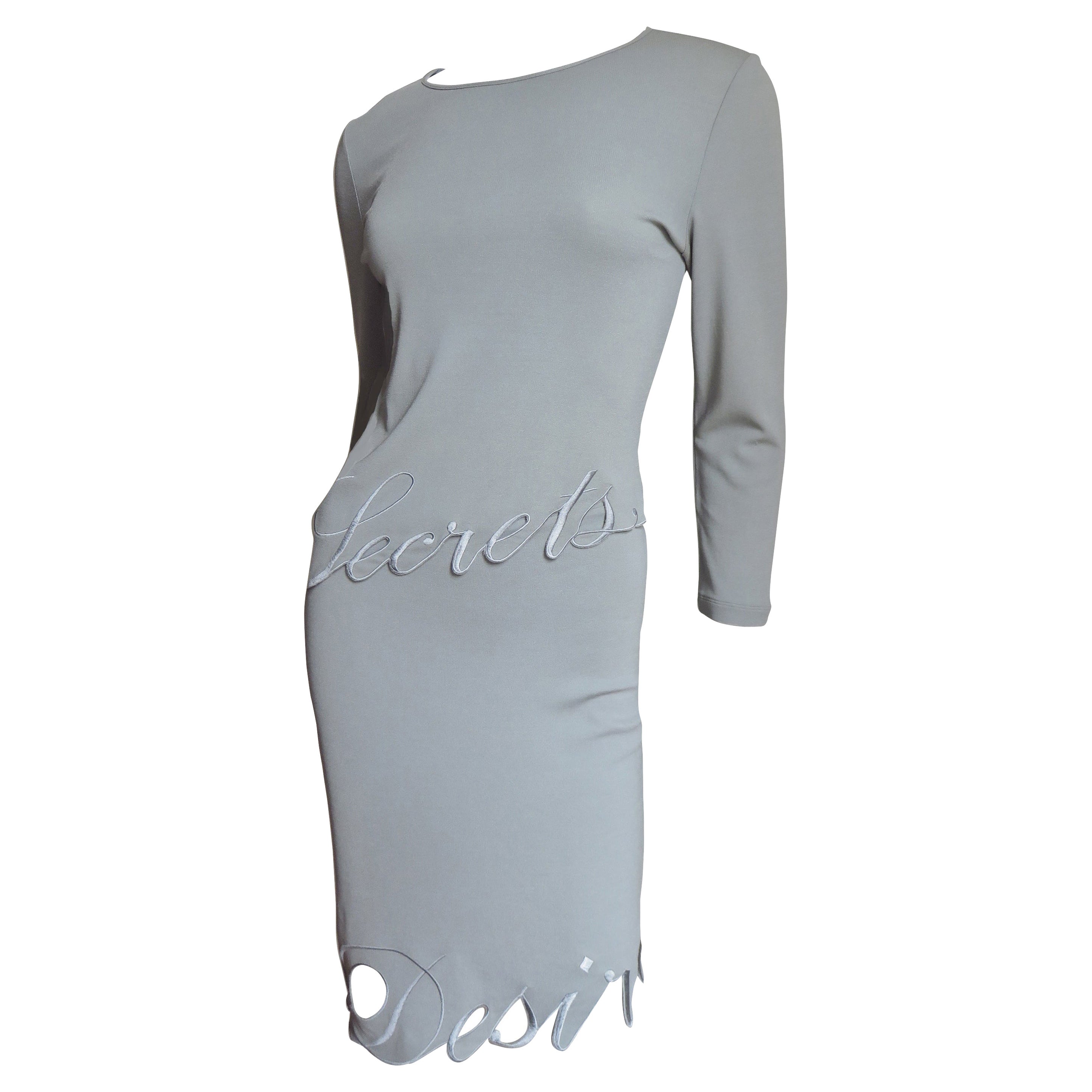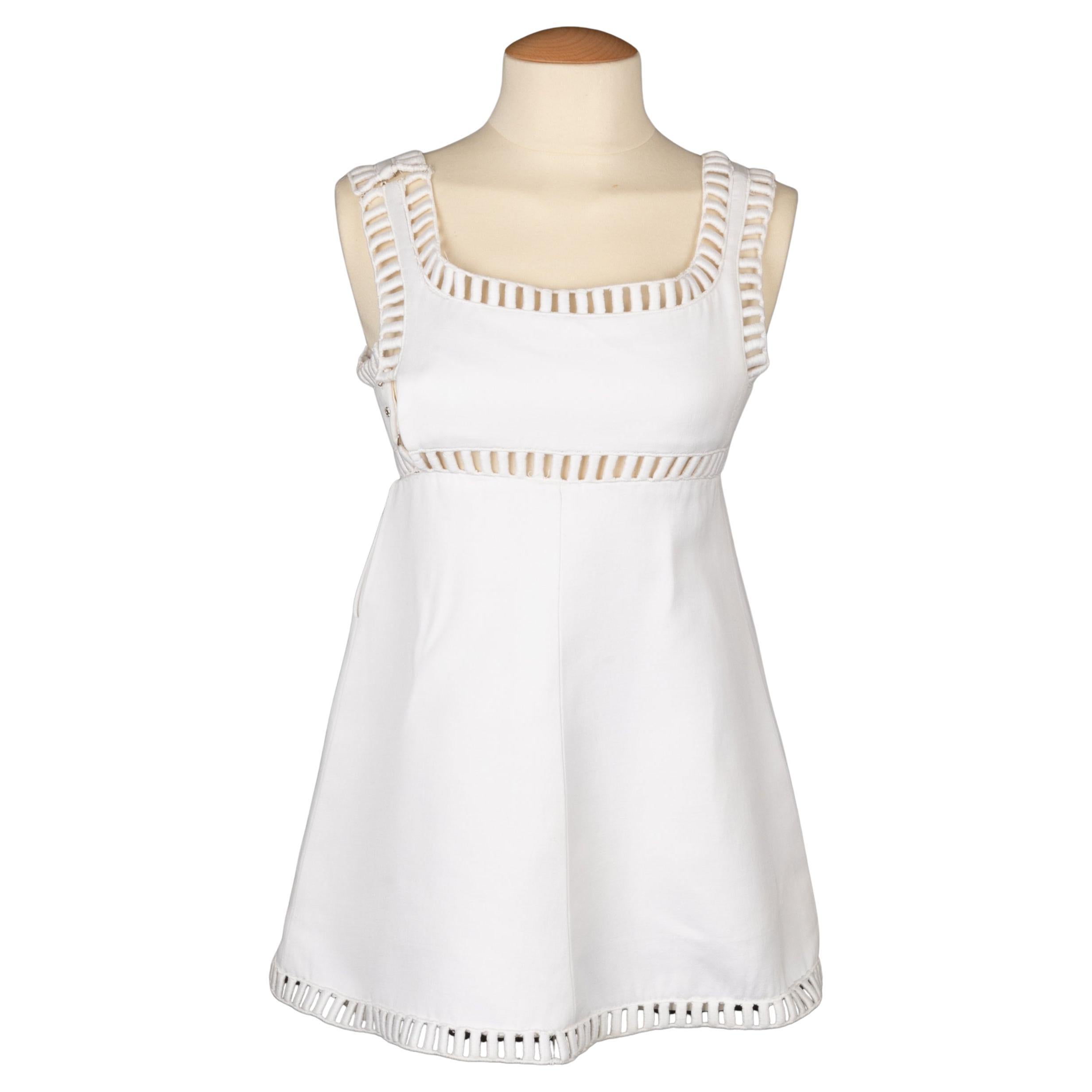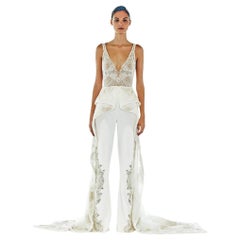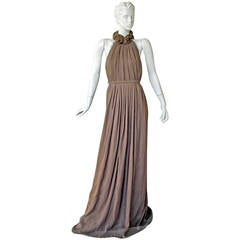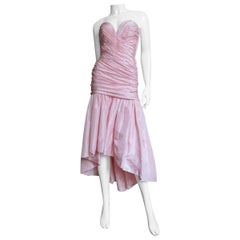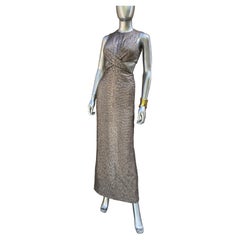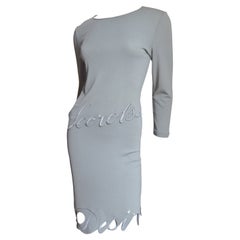New Valentino Floral Halter Maxi Dress
About the Item
- Designer:
- Brand:
- Period:
- Condition:
- Seller Location:Los Angeles, CA
- Reference Number:1stDibs: LU19622954642
Valentino
The mononymously known Italian designer Valentino Clemente Ludovico Garavani (b. 1932) is renowned for his fashion house of romantic styles and feminine shapes that he founded in Rome in 1960. Valentino dresses, skirts and other apparel captured the hearts of many of Italy’s wealthiest ladies in the couturier’s early days and led to commissions from Babe Paley, Gloria Guinness, Jayne Wrightsman and others on the international best-dressed list (when it still meant something). They sought out Valentino for gorgeous gowns, jackets, elegant daytime wear and even when they needed wedding dresses.
An early fascination with fashion developed when Valentino attended the theater as a child and was dazzled by the evening gowns on stage. While a teenager in Voghera, Lombardy, he studied under Italian designer Ernestina Salvadeo and soon moved to Paris, where he trained at the École des Beaux-Arts and the Chambre Syndicale de la Couture Parisienne. Valentino spent time apprenticing under haute couturiers Jean Dessès and Guy Laroche, learning how to design and construct high fashion while also thinking about how to strike out on his own.
In 1959, Valentino returned to Italy, and a year later, he opened his own salon, soon joining with longtime professional and personal partner Giancarlo Giammetti. It was located on Rome’s trendy Via Condotti and modeled after the French maisons. One of his earliest clients was Elizabeth Taylor, who discovered Valentino while she was in Rome filming Cleopatra and ordered the white dress that she wore to the premiere of Spartacus.
When the designer launched his first couture line in 1962 with its fiery red colors, it was internationally celebrated, with Valentino soon attiring fashion trendsetters including Princess Margaret and Audrey Hepburn. He formed an especially close friendship with Jacqueline Kennedy Onassis, for whom he designed numerous dresses. Luxurious drapery with fine needlework, bold uses of color and dramatic flourishes would define Valentino fashion across the decades.
As a fashion house, Valentino is best known for its signature Valentino Red color, though one of its iconic lines is the monochromatic “no colour” collection for which the designer won the Neiman Marcus Award in 1967. (The collection also debuted his trademark “V.”) The white dresses and beige dresses led to a demand for Valentino wedding gowns, with clients including Elizabeth Taylor, Jennifer Lopez and Anne Hathaway.
Valentino retired from his fashion empire in 2007, with Alessandra Facchinetti and then the duo Maria Grazia Chiuri (who departed in 2016) and Pierpaolo Piccioli succeeding him as creative directors. But Valentino still steps out of retirement for special occasions, such as designing a wedding gown for Princess Madeleine of Sweden in 2013.
Today, the brand offers a range of collections that include the Valentino Garavani line and REDValentino, a diffusion line that is aimed at a younger audience. The house has expanded far beyond women’s haute couture and prêt-à-porter to encompass various lines of accessories, including shoes, sunglasses, scarves and perfume.
Find vintage Valentino evening dresses, handbags and other items on 1stDibs now.
Gucci
Long before trend-bucking creative director Alessandro Michele brought his hallucinatory “Utopian Fantasy” campaign to Gucci, it was a modest Italian leather shop. Today, it’s an internationally renowned luxury house with an iconic logo, and vintage Gucci clothing, handbags and shoes are among high fashion's most covetable goods.
Guccio Gucci (1881–1953) admired the stylish suitcases he saw wealthy guests arrive with at the Savoy Hotel in London, where he worked as a bellhop. So, in 1921, after a stint at Franzi, a luggage company in his hometown of Florence, he opened a leather goods shop of his own.
At first, Gucci’s Florence business specialized in equestrian accessories. But as its reputation flourished, particularly among the English aristocracy, so too did its footprint. In 1938, he brought three of his sons — Aldo, Vasco and Rodolfo — into the business and expanded it to Rome and later Milan. In the mid-1930s, a League of Nations embargo against Italy pushed Gucci to experiment with alternatives to imported leather. Its woven hemp fabric from Naples, adorned with the brand’s signature diamond print, was a hit, especially among A-list celebrities. The material was first used on suitcases before finding enduring popularity on handbags. (No list of revered designer purses would be complete without Gucci.)
In the 1950s, Elizabeth Taylor carried one of Gucci’s bamboo-handled tote bags, another adaptation to material rationing. After Jackie Kennedy was seen sporting a slouchy Gucci tote in 1961, it was renamed for the First Lady. Then Grace Kelly, on a visit to the boutique in Milan, inspired Rodolfo Gucci to work with Italian illustrator and Gucci textile designer Vittorio Accornero on the Flora print in 1966. Taking cues from Sandro Botticelli’s Primavera, with its pattern of flora and insects, it was painted entirely by hand and featured no fewer than 37 colors.
In 1953, just 15 days after opening his first store on New York’s 5th Avenue, Guccio passed away at 72. The early 1970s saw store openings in Tokyo and Hong Kong, but by the late 1980s, Gucci was floundering. Rodolfo Gucci took charge in 1982, but family drama and lawsuits ensued. In 1993, Rodolfo’s son, Maurizio, transferred his shares in the company to Investcorp, ending the family’s involvement in Gucci. Dawn Mello, then-president of Bergdorf Goodman, joined as creative director in 1989. But it was Tom Ford, who took over as creative director in 1994, who ultimately revived the brand.
Ford’s racy ads, shot by photographers such as Mario Testino, stirred controversy. And his potent vision of sexed-up femininity — with “jewel-toned satin shirts unbuttoned to there,” as Vogue described his breakthrough 1995 runway show — was wildly successful. The new millennium brought new ownership — Pinault Printemps Redoute in 2004 — and a more toned-down vision from Frida Giannini, who became sole creative director in 2006. Alessandro Michele was named creative director in 2015, and the storied brand took a giant leap forward.
Find vintage Gucci clothing and accessories on 1stDibs.
- ShippingRetrieving quote...Shipping from: Los Angeles, CA
- Return Policy
More From This Seller
View All2010s Jumpsuits
21st Century and Contemporary Evening Gowns
Early 2000s Cocktail Dresses
1990s Evening Dresses
2010s Toga Dresses
Early 2000s Evening Dresses
You May Also Like
1980s French Evening Dresses and Gowns
2010s American Cocktail Dresses
2010s Evening Dresses and Gowns
1990s Italian Skirt Suits
2010s Italian Evening Dresses
1960s French Babydoll Dresses
Recently Viewed
View AllRead More
Gucci’s Anatomical Heart-Shaped Bag Is Surprisingly Romantic
Created during Alessandro Michele's tenure at the brand, this sparkling, whimsical minaudière feels just right for a night out.
Explore a Century of Gucci Fashion in London
The iconic Italian label’s traveling exhibition has just arrived in London.
